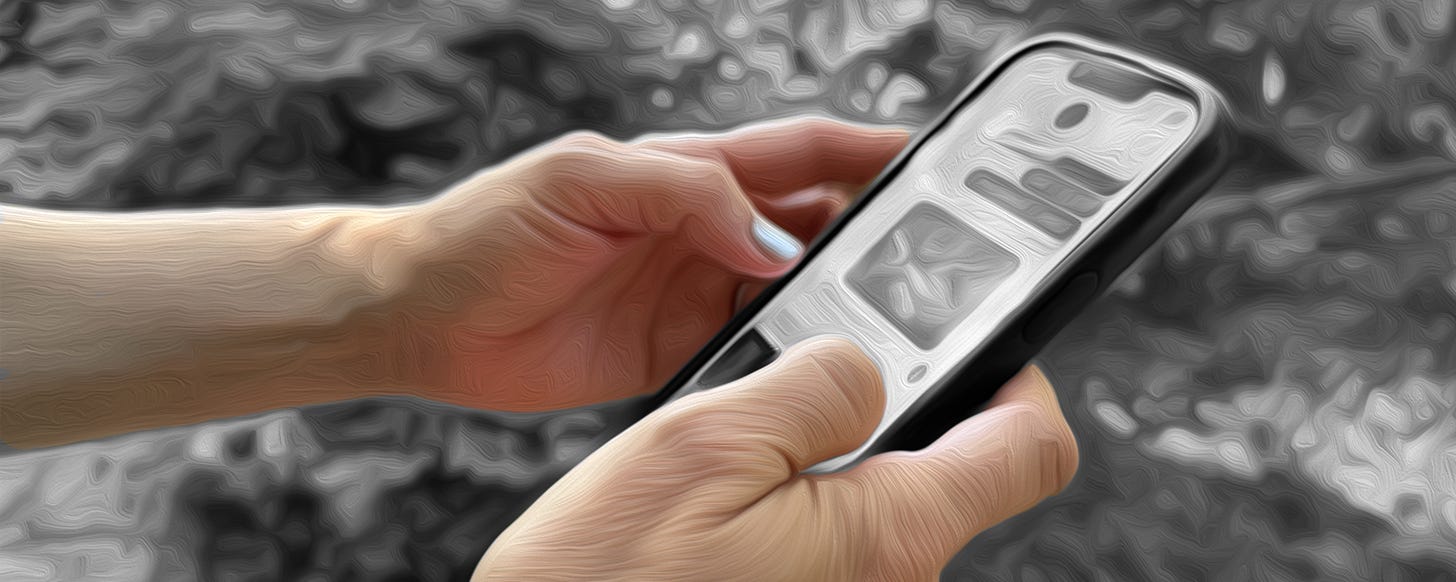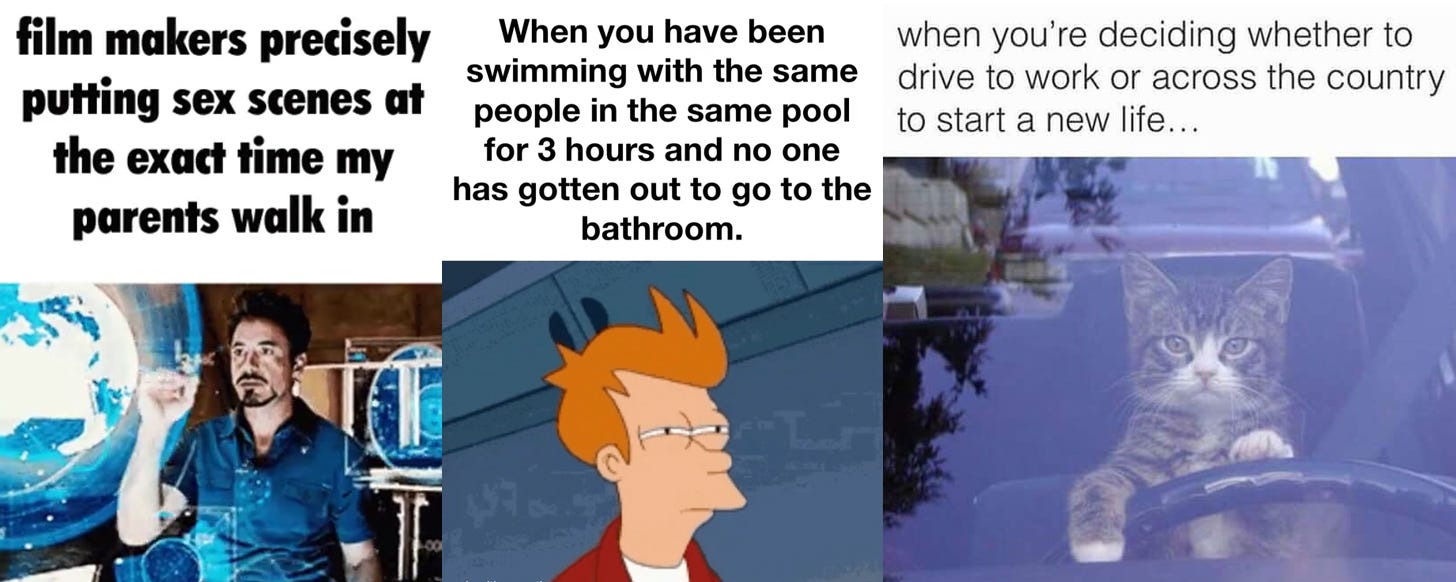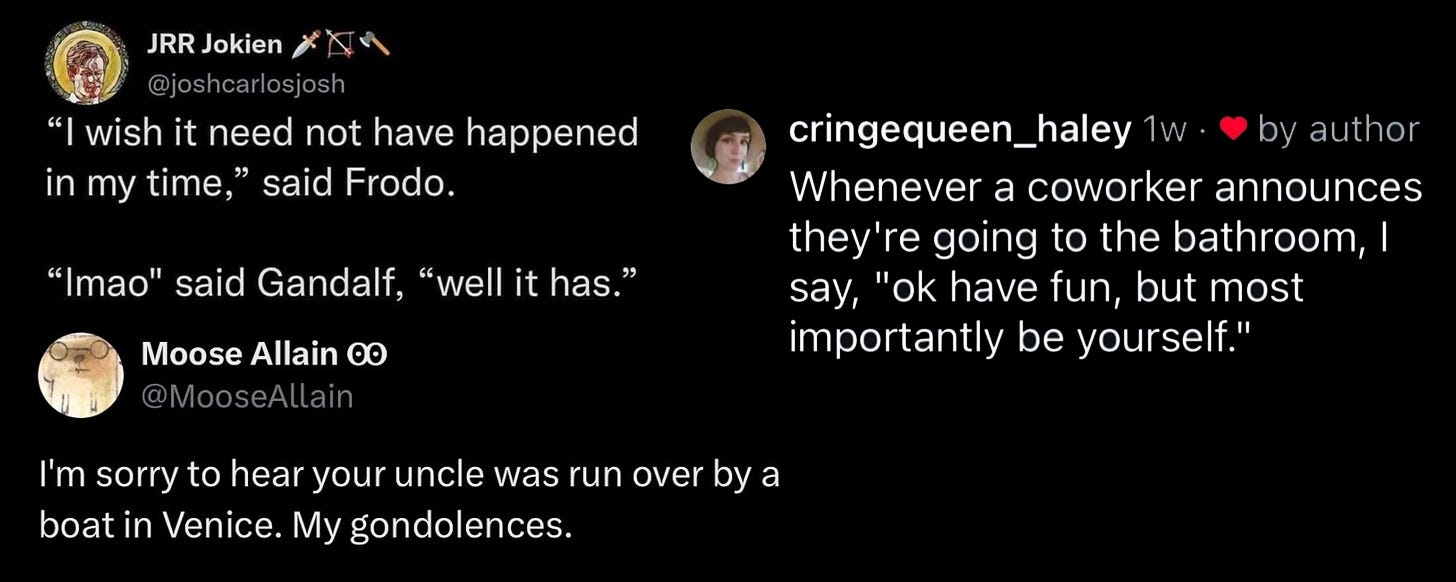An audio version of this post is available below (for paid subscribers).
Back when we were logging 24-hours shifts in the hospital, a colleague of my wife helped her (and by extension, me) through that difficult time with just a few taps on her phone. She brightened our darkest days not by ordering food, or sending bittersweet condolences. She sent funny memes and videos, out the blue, without prompt or meaning, and continues to this day. The laughter they brought forth was surprisingly curative.
I really believe that if you have the ability, there is an obligation to make people laugh. - Bob Newhart
Whoever said “laughter is the best medicine” makes it sound so easy. We don’t all have the wit or improv skills of Patch Adams, and often the only humor available is the very dark kind. Your friend may be feeling like they will never smile again. But thankfully, there are millions online that have done the hard part for us, and their whimsy is ripe for the taking.
When you care enough to send the very best… memes!
What’s a “meme?” Webster’s Dictionary defines it as “an amusing or interesting item (such as a captioned picture or video) or genre of items that is spread widely online especially through social media.” Think Grumpy Cat, Philosoraptor, the Success Kid, or the everlasting Rickroll. The digital phenomenon has been studied as far back as the mid-90s.
Coming up with a joke that would be deemed appropriate by someone in crisis is a gigantic impossible feat. But that’s the magic of memes. They do the heavy lifting for us, making us giggle at gags that wouldn’t play as well as text alone.
Something silly doesn’t only make people laugh, it gives them a desperately needed mental break. It reminds them that there’s another world out there, a world of ups as well as downs, one that still exists even as it feels like everything was ripped from under their feet. And when they get something spontaneous from a friend that tickles their funny bone, they’re reminded that you’re there in that world of normalcy, reaching out.
If you’re unfamiliar with the concept, don’t fret, you can still harness a meme’s positive energy with a few easy steps.
Get scrolling.
Sign up for social media. There are tons of meme websites that have a huge library, like Pinterest or Reddit, but a lot of them are probably outdated and overused. You want to try and find something your loved one hasn’t seen before. A quick scan of Notes here on Substack will give you some choice selections. If you’re on Facebook, you’ve probably seen people share stuff like this already. Feel free to steal their best material and pass it along. A meme’s greatest destiny is to go viral. You can screenshot the image on your phone, or in some instances if you hold down your finger on the image, it will allow you to save it to your photo folder.
Follow popular cartoonists, then see what artists they’re following. Do the same with a comedian you know your friend is into. When someone’s going through something horrible, they may be averse to scrolling through social media because they might find a few depressing posts before an uplifting one. So you’re doing the hard part for them - mining through the rubble until you strike gold.
This is fine…
A big caveat: Don’t send something directly related to a friend’s problem. You’re doing this to take their mind off the bad stuff. Pick something that generally references hard times, and how unfair or improbable life can be. Or an image that quotes or pokes fun at one of your friend’s favorite shows or movies. Don’t force it. Look for knee-slapping pics if you’re inspired by a particular theme, but otherwise you can wait until something appropriate scrolls by.
Don’t send a message you might see on a motivational poster. Stuff like, “The steps you take don’t have to be that big. They just have to be in the right direction.” These can be exhausting. Your friends know it’s going to be a long road. They need a break, not a lecture.
If you’re a first time meme’r, consider creating a text thread with some web-savvy friends and send an image or gif to the group to get feedback. Their reaction might help you gain a clearer picture of what humor is appropriate for the situation. If your friend tells you to stop, stop. If they don’t respond, don’t ask them if they got it. You’re sending energy their way, without an expectation of anything in return.
Frequency rules for friends and family obviously vary. A good rule of thumb would be to stagger your posts. Don’t send 5 things in a row, or even in a day. Maybe one or two a week, depending on how close you are.
If you want to step up your game, send short videos. Spend some time scrolling through TikTok or Instagram. Avoid slapstick (people getting hurt) or stunts (people putting their lives in danger), and steer toward people being goofy at home, dancing, singing, playing instruments. Showing off an astonishing or unusual talent. Consider clips about amazing things in nature. Animal antics are almost always a hit.
Keep it light. Something positive and honest. Or slightly absurd. If there’s a cat being weird in it somewhere, you’re on the right track.
To meme or not to meme.
If you feel uncomfortable guessing what your friend might find amusing, don’t stress. Even a series of heartfelt emojis can get the job done. A screenshot of a funny post on X, BlueSky or Threads will also do the trick. Over time you may see another person try to put a smile on your friend’s face, and you’ll gradually learn the ins and outs of this strange, 21st-century language. And some of you don’t touch social media. I understand and respect that, in which case a cheery text is all you need.
This may seem like second nature to most of you. Kids that grew up with a smartphone in their hand are well aware of the minefield of nuances inherent in online discourse. Or you may be intimately familiar with the concept of creating and/or sharing social “content.” If you do all this already, keep it up! But there are tons of people out there that often don’t know the right thing to say, or how their comments are interpreted.
This isn’t a competition to crown the funniest friend. This is a quick reminder that you’re available for help. That you stopped whatever you were doing in your day and you’re keeping them in the front of your mind. As easy as texting “Thinking of you!” Memes are just a comedic upgrade to those kinds of texts. A laughing fit can push back the shadows cast by a tragedy long enough for people to see the sun, if only for a minute or two.
Laughing is also a cue to our bodies that we’re safe. As said by Dr. Carl Marci in this article, “Laughter was a safe, early social signal to form human bonds…. Before we could speak, laughter told early humans that ‘Everything’s okay, you can come over to my side.’” And when your friend is perhaps feeling their loneliest and most isolated, that’s exactly the message you want to send.
Let’s talk it out.
What genre of meme or video do you message the most to friends in need of a laugh? What was the last thing that made you really crack up? Let me know in the comments.
An audio version of this post is available below (for paid subscribers).
Keep reading with a 7-day free trial
Subscribe to The Friend's Guide to Horrible Things to keep reading this post and get 7 days of free access to the full post archives.








